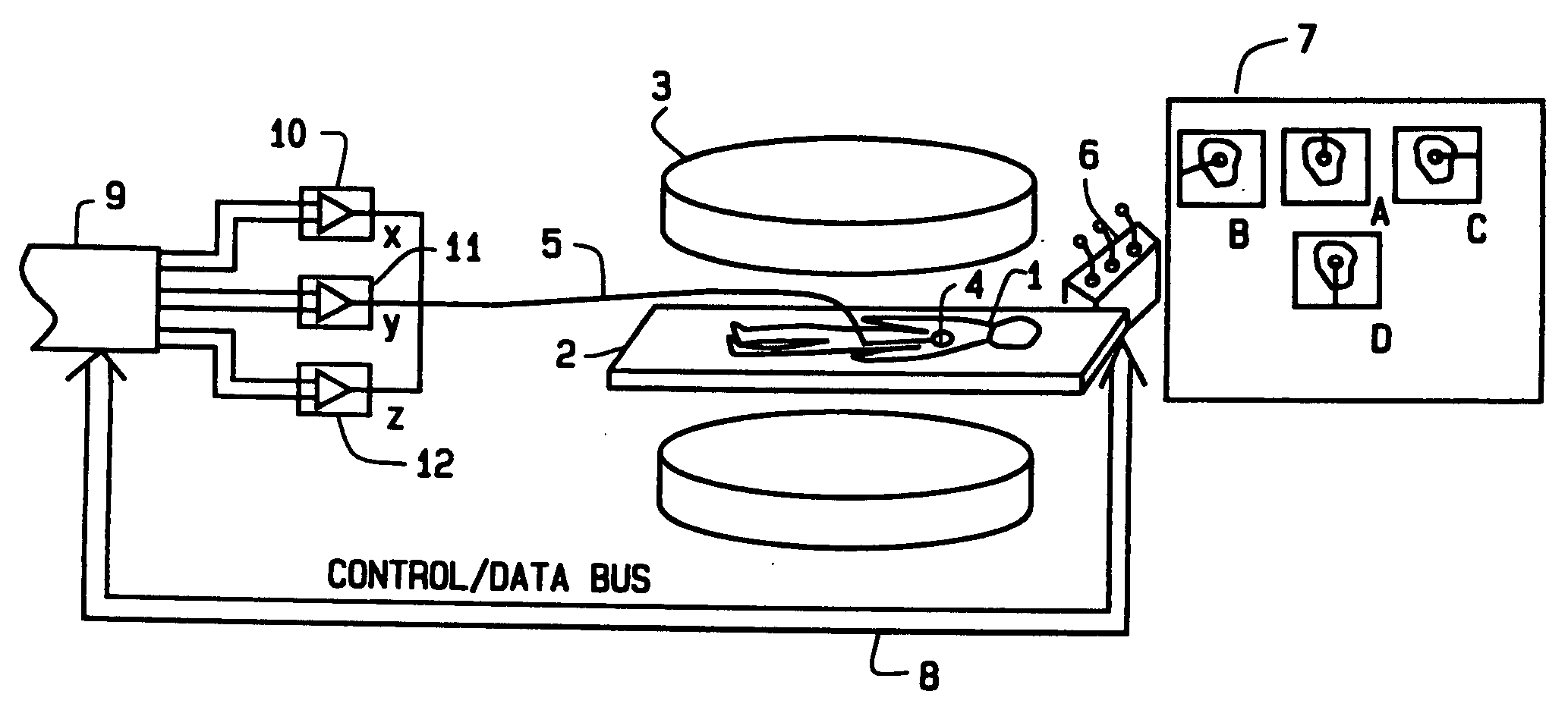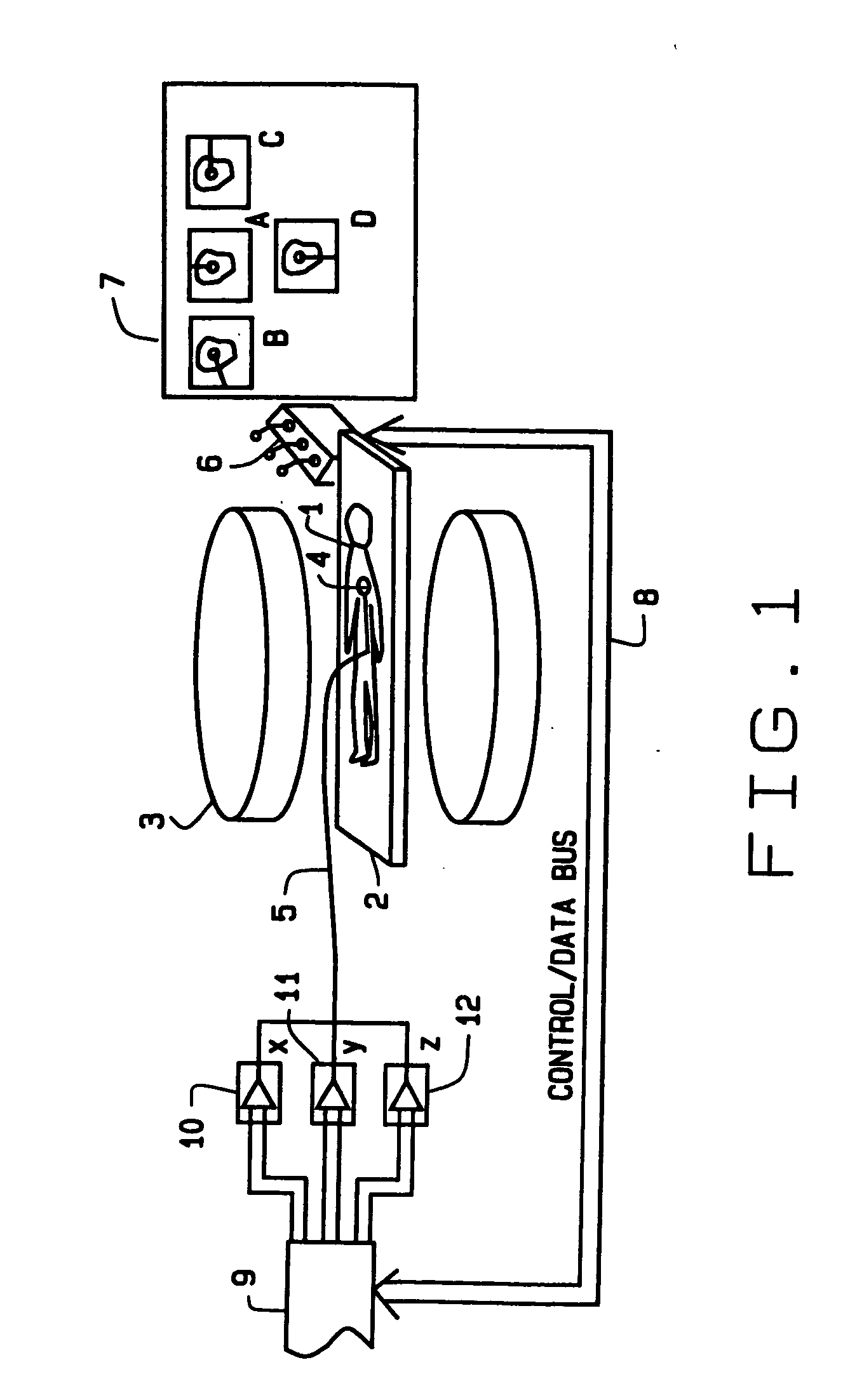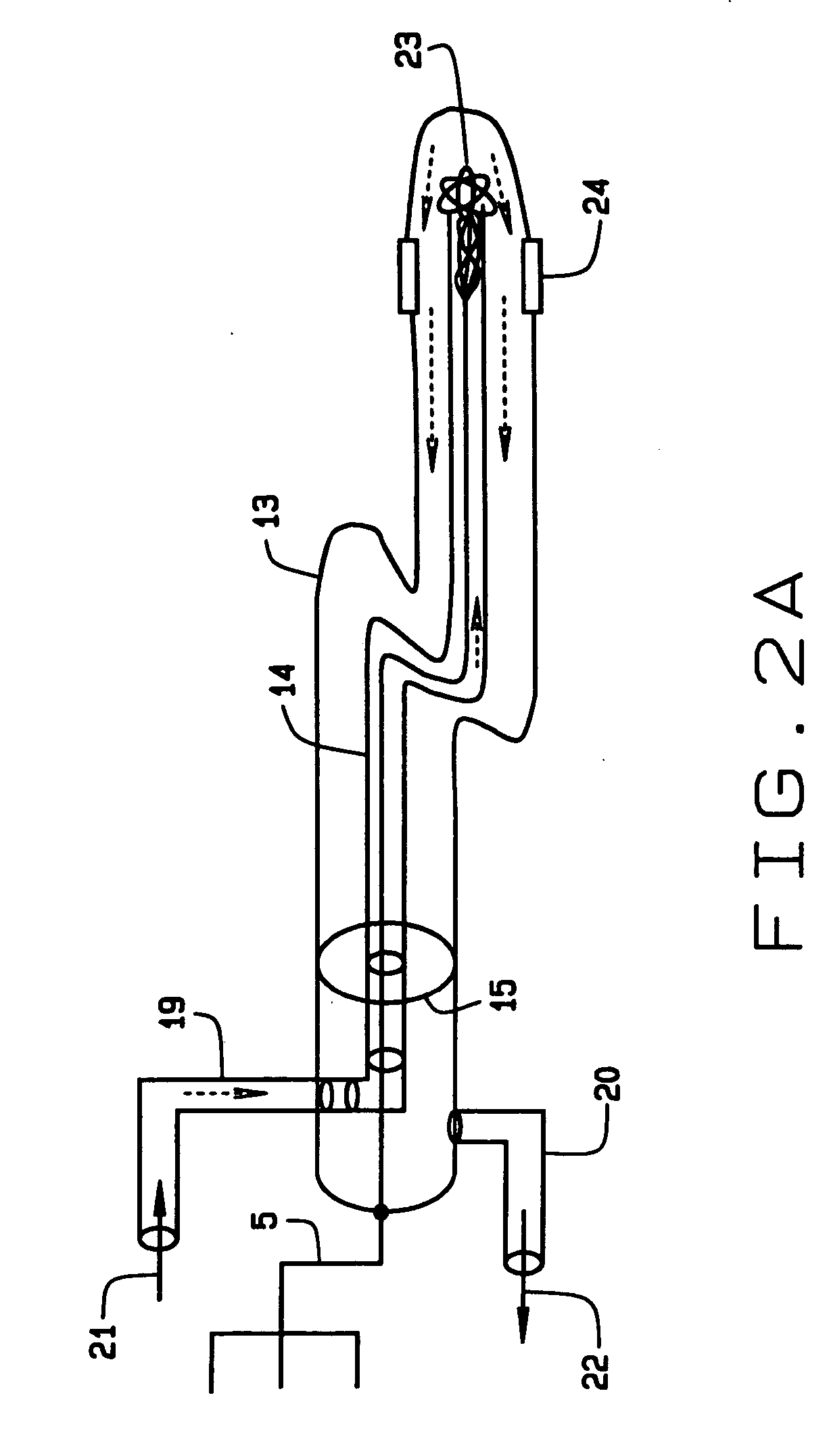Catheter navigation within an MR imaging device
- Summary
- Abstract
- Description
- Claims
- Application Information
AI Technical Summary
Benefits of technology
Problems solved by technology
Method used
Image
Examples
Embodiment Construction
[0035] Referring to the drawings, FIG. 1 is a schematic of a system for carrying out a stereotactic procedure in accordance with the method of this invention. A patient 1 rests on the gurney or transport table 2 of an interventional MR imager 3, as supplied, for example, by Fonar Corp., Melville, N.Y. The procedure might alternatively be carried out inside the bore of a standard high field MR scanner, as supplied, for example, by Philips Medical Systems, Best, The Netherlands. A catheter 4 is disposed within the body of the patient 1. Leads 5 from the catheter 4 are connected to the power supplies or amplifiers 10, 11, 12 each of which drives one of three coils located inside the tip of the catheter 4. The power supplies 10, 11, 12 are controlled by an algorithm resident in the host computer 9. The physician (not shown) views the location of the catheter tip inside the body and the structure of the body part on the monitors 7 of the MR scanner 3. The monitors 7 show the sagittal, ax...
PUM
 Login to View More
Login to View More Abstract
Description
Claims
Application Information
 Login to View More
Login to View More - R&D
- Intellectual Property
- Life Sciences
- Materials
- Tech Scout
- Unparalleled Data Quality
- Higher Quality Content
- 60% Fewer Hallucinations
Browse by: Latest US Patents, China's latest patents, Technical Efficacy Thesaurus, Application Domain, Technology Topic, Popular Technical Reports.
© 2025 PatSnap. All rights reserved.Legal|Privacy policy|Modern Slavery Act Transparency Statement|Sitemap|About US| Contact US: help@patsnap.com



